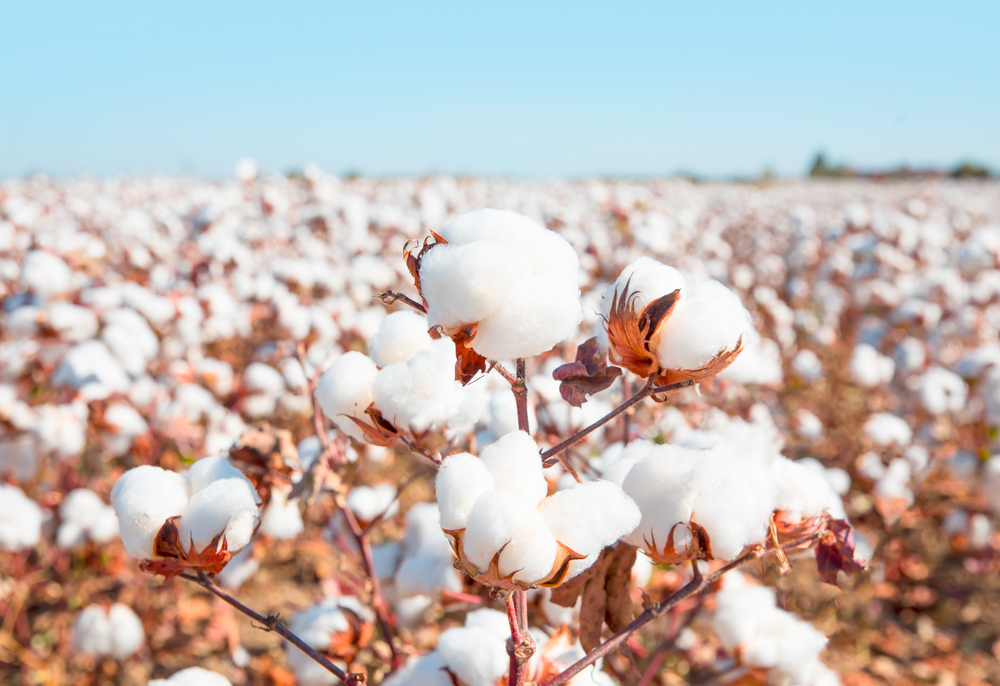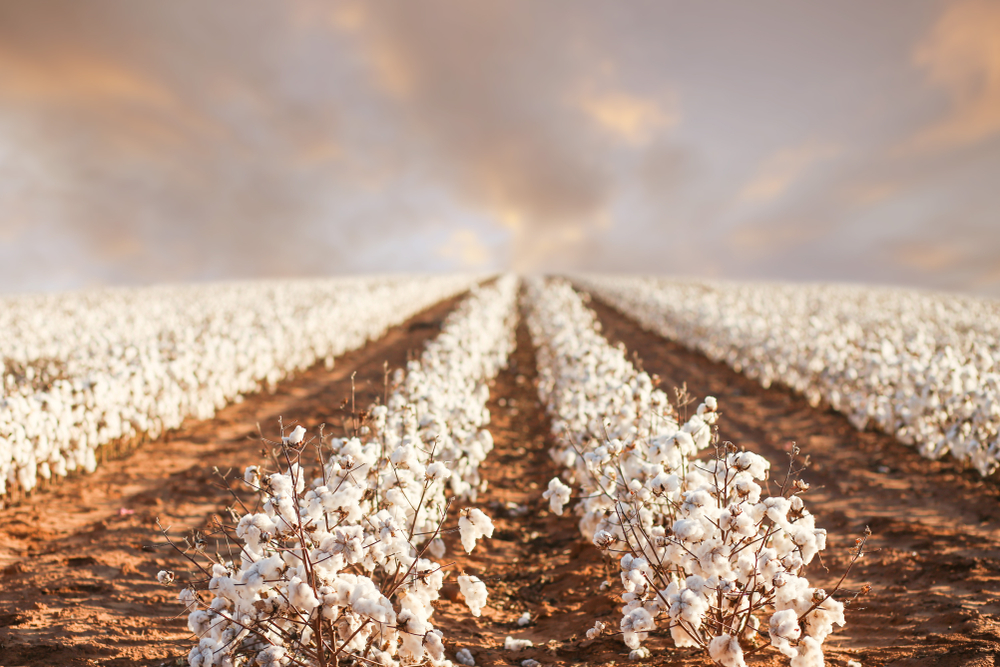Cotton Future Prices: Is It Conducive For Apparel Industries?



Cotton has been the mainstay of garment industries since the early years of civilisation when human beings learned to give up wearing furs. It has thrived with its growth being enhanced in all possible manners. Sure, there are a handful of countries known for their high quality of cotton. Egypt and India come to mind instantly. However, the textile industry is not confined to only these nations. Instead, one can find the manufacture of garments using cotton grow in an unprecedented manner. It is natural for all leading companies in the textile and garment industry to frown at the mere mention of a rise in the costs of their raw material. Cotton future prices, thus, make a huge impact during inflation and affects the manufacture and export of good quality cotton.
It is most interesting to know that cotton, one of the oldest crops, remains highly popular despite the advent of synthetic fibres. The characteristics of cotton make it the fabric of choice regardless of the use. One would be particularly intrigued to learn that the following traits have triggered its demand, causing multiple nations to import the best quality cotton for their thriving garment industry.
Cotton Properties
- Soft Texture- This property makes cotton clothing feel soft against the skin. The wearer is satisfied with the level of comfort that a cotton garment ensures even during hot and sultry conditions. The fabric retains its texture even after repeated washings and is hailed as the best natural fabric throughout the world.
- Durability- The inherent fibres of the cotton are extremely strong and reacts positively to wear and tear. Most people of modest means prefer to wear cotton clothes that are easily available across Third World countries. The cellulose structure of the cotton plant is strong as well, making the fabric last for a long time when used on its own.
- Absorbability – It reacts well to liquids and absorbs them completely. As a result, washing cotton clothes is easy and simple. Cleaning cotton clothes does not pose any problem and can be done effectively with water. A substantial amount of space in between the fibres of the fabric makes it 100% absorbent.
- Capable of Holding Dyes- Cotton garments are available in a wide range of colours today. The absorbent nature of cotton makes it easy to be dyed in all colours of the rainbow and newly created artificial hues.
- Breathability- Cotton clothes are believed to be the most comfortable of all fabrics worn today. Indeed, the structure of the fibres allows the skin to breathe, thus, negating the harmful effects completely.
- No Static Electricity- Cotton is a poor conductor of electricity and the wearer of cotton garments will not be surprised with an unpleasant tingling. Static electricity is often a concern with silk clothing, however.
Popular uses of cotton by the apparel industry

- Woven Fabrics- Every kind of woven fabric in vogue today utilises cotton yarns for manufacturing process. One can, thus, find cotton being used to create denim clothing, canvas, damask, and flannel. This list is by no means exhaustive. One may come across multiple other fabrics created with cotton as the primary element.
- Garments- The fashion world has experienced unprecedented popularity of cotton garments following the revolution for sustainability. A majority of men’s clothing is fashioned out of cotton, including lightweight coats, jackets, trousers, and shirts. Caps and headgear are also made out of cotton to ensure comfort. Women’s apparel is made out of cotton too, especially frocks, skirts, blouses, shirts, tops, and jackets. Families prefer to buy cotton outfits for their children as it is a natural fabric with almost no ill effects on the skin.
- Innerwear- The prospect of feeling natural and comfortable against the skin makes the fashioning of cotton undergarments extremely popular. Superior absorbency coupled with 0% skin irritation and low risks of infection makes cotton a healthy choice for undergarments too.
- Home Decor- The durability and sustainability of cotton make many users eager to buy cotton furnishings. Upholstery, table linen, and bedclothes made out of cotton have remained popular for ages.
Cotton economics
It is a well-known fact that China is the leading producer of cotton with India and the USA following closely behind. A recent spurt in cotton price has caused many textile companies and the garment industry to bear the brunt. Passing on the escalated costs to the end-user has become extremely difficult as the users simply stop spending money on cotton garments, thus, affecting the profitability of the industry adversely.
The lucrative orders for additional cotton yarns and bales have to be honoured to keep trade at an optimum. Indian industries report that new orders for garments have dipped to an all-time low following the pandemic. Prospects of trade look bright with orders from the European Union and the US that are expected to rejuvenate the Indian industries. High-priced orders may elude the apparel industry of India and Third World countries during FY23 as the manufacturers and retailers are forced to up their process. This is a catch-2 situation with a majority of clothing exporters and dealers struggling to come to terms with the impending loss triggered by cotton future prices.
Impact on apparel companies
Cotton has emerged as the new trouble point for companies catering to the garment industry. Sure, its price has increased, but should the apparel companies blame their financial loss squarely on the spiralling of cotton yarn prices? There can be no simple answer to this as the topic is diverse and involves several complexities. With the market rice hovering around per pound price of $1.15 to $1.20, the companies are well in their right to blame the loss of profitability on the steep rise in cotton costs.
While such a statement seems justified, can cotton alone be blamed for increasing clothing costs? Well, many naysayers state that the actual trouble lies in making use of the long and complicated involvement of supply chains that deliver cotton from around the globe after souring them cheaply. The inflated price is believed to have done the cotton farmers a lot of good.
Is it so? Again, such a statement needs to be taken with a pinch of salt. The cotton-growing rural populace has not witnessed any windfall despite the rising price of cotton. The money has gone to the middlemen and suppliers who occupy the middle of the supply chain. Cutting them off completely can lead to operational challenges too. This has caused the apparel companies to lower their profits and think about not burdening the long-time customers both within the country and overseas.
Is there a solution?
Multiple apparel companies have joined hands to communicate their problems to the minister of textiles in India. They communicated that the rising price of raw materials may soon affect the entire garment /textile industry within the country resulting in shortages and loss of profits in 2022-23. Almost all the manufacturers and distributors, along with exporters, have urged the “Cotton Corporation of India” to intervene and have a firm plan for regulating the price as well. A long time measure is awaited in the form of the availability of “cotton price stabilisation funds” for the truly deserving entities.
Many companies have also begun new production by improving the quality of their clothing so that the end-user or importer has no qualms about paying a higher price.

Cotton futures prices: Trend
The cotton price is growing steadily due to less production and additional issues that stemmed from the entire world experiencing a lockdown due to the devastation caused by COVID-19. According to the statistics for 2021, the average cotton price per kg had increased by 41%. The rates are expected to grow steadily throughout 2022 and during the first quarter of 2023.
The abnormally high demand for cotton yarns coupled with low production has prompted China to revise its rates accordingly. The top three countries that are expected to meet most of the world’s demand for cotton despite rising prices are the USA, Brazil, and India.
Market predictions estimate the price of a pound of cotton to reach $151.4251 by the end of April 2022. It is expected to stabilise a bit in the following months. However, another escalation is expected to take place thereafter, with the prediction revealing the best price of a pound of cotton to be equal to $171.5455 by the end of the year. However, companies and individuals trading in cotton are pleased with the price of cotton.
Conclusion
Not all is lost for the apparel industry depending on cotton yarns. Analysts predict an increase in demand, and the rates will be stabilised once the governments begin regulating the process. Moreover, many companies are placing trust in training their employees to ensure self-dependence. This issue to cut production costs substantially with outsourcing to other units is becoming rare and far between. Sure, man-made fabrics have flooded the garment industry with affordable clothing provided to the end-user. But, the quality of natural fibres remains unsurpassed, making the apparel companies continue favouring the use of cotton to date.
Check out the trends by connecting with FASHiNZA TODAY!



















